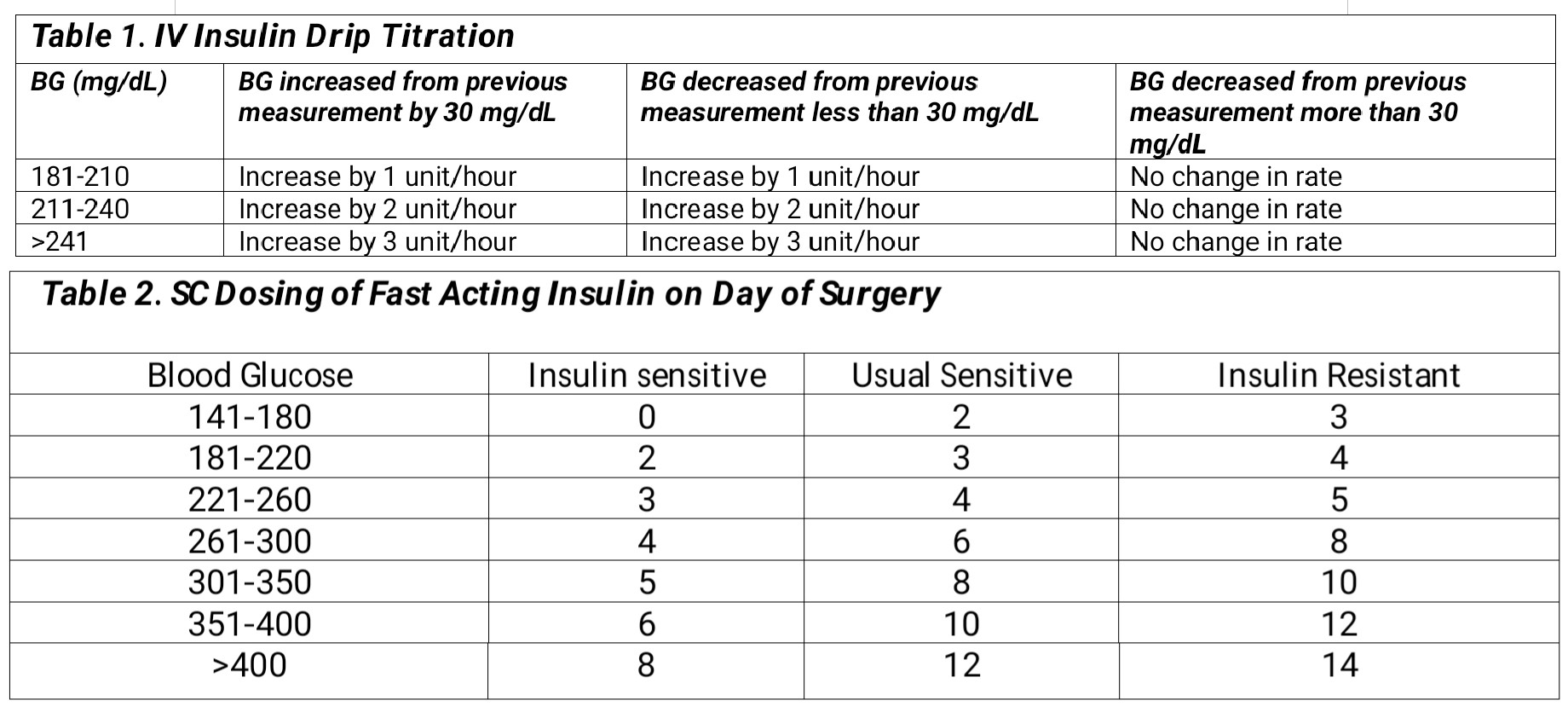[1]
Saini V. Molecular mechanisms of insulin resistance in type 2 diabetes mellitus. World journal of diabetes. 2010 Jul 15:1(3):68-75. doi: 10.4239/wjd.v1.i3.68. Epub
[PubMed PMID: 21537430]
[2]
Cerf ME. Beta cell dysfunction and insulin resistance. Frontiers in endocrinology. 2013:4():37. doi: 10.3389/fendo.2013.00037. Epub 2013 Mar 27
[PubMed PMID: 23542897]
[3]
Henry RR, Scheaffer L, Olefsky JM. Glycemic effects of intensive caloric restriction and isocaloric refeeding in noninsulin-dependent diabetes mellitus. The Journal of clinical endocrinology and metabolism. 1985 Nov:61(5):917-25
[PubMed PMID: 4044780]
[4]
Duggan EW, Carlson K, Umpierrez GE. Perioperative Hyperglycemia Management: An Update. Anesthesiology. 2017 Mar:126(3):547-560. doi: 10.1097/ALN.0000000000001515. Epub
[PubMed PMID: 28121636]
[5]
McDonnell ME, Umpierrez GE. Insulin therapy for the management of hyperglycemia in hospitalized patients. Endocrinology and metabolism clinics of North America. 2012 Mar:41(1):175-201. doi: 10.1016/j.ecl.2012.01.001. Epub 2012 Feb 17
[PubMed PMID: 22575413]
[6]
Hotamisligil GS, Murray DL, Choy LN, Spiegelman BM. Tumor necrosis factor alpha inhibits signaling from the insulin receptor. Proceedings of the National Academy of Sciences of the United States of America. 1994 May 24:91(11):4854-8
[PubMed PMID: 8197147]
[7]
Delamaire M, Maugendre D, Moreno M, Le Goff MC, Allannic H, Genetet B. Impaired leucocyte functions in diabetic patients. Diabetic medicine : a journal of the British Diabetic Association. 1997 Jan:14(1):29-34
[PubMed PMID: 9017350]
[8]
Yamagishi SI, Edelstein D, Du XL, Brownlee M. Hyperglycemia potentiates collagen-induced platelet activation through mitochondrial superoxide overproduction. Diabetes. 2001 Jun:50(6):1491-4
[PubMed PMID: 11375352]
[9]
American Diabetes Association. 2. Classification and Diagnosis of Diabetes: Standards of Medical Care in Diabetes-2018. Diabetes care. 2018 Jan:41(Suppl 1):S13-S27. doi: 10.2337/dc18-S002. Epub
[PubMed PMID: 29222373]
[10]
Joshi GP, Chung F, Vann MA, Ahmad S, Gan TJ, Goulson DT, Merrill DG, Twersky R, Society for Ambulatory Anesthesia. Society for Ambulatory Anesthesia consensus statement on perioperative blood glucose management in diabetic patients undergoing ambulatory surgery. Anesthesia and analgesia. 2010 Dec:111(6):1378-87. doi: 10.1213/ANE.0b013e3181f9c288. Epub 2010 Oct 1
[PubMed PMID: 20889933]
Level 3 (low-level) evidence
[11]
Duggan EW, Klopman MA, Berry AJ, Umpierrez G. The Emory University Perioperative Algorithm for the Management of Hyperglycemia and Diabetes in Non-cardiac Surgery Patients. Current diabetes reports. 2016 Mar:16(3):34. doi: 10.1007/s11892-016-0720-z. Epub
[PubMed PMID: 26971119]
[12]
Frisch A, Chandra P, Smiley D, Peng L, Rizzo M, Gatcliffe C, Hudson M, Mendoza J, Johnson R, Lin E, Umpierrez GE. Prevalence and clinical outcome of hyperglycemia in the perioperative period in noncardiac surgery. Diabetes care. 2010 Aug:33(8):1783-8. doi: 10.2337/dc10-0304. Epub 2010 Apr 30
[PubMed PMID: 20435798]
Level 2 (mid-level) evidence
[13]
Johansen NJ, Christensen MB. A Systematic Review on Insulin Overdose Cases: Clinical Course, Complications and Treatment Options. Basic & clinical pharmacology & toxicology. 2018 Jun:122(6):650-659. doi: 10.1111/bcpt.12957. Epub 2018 Feb 23
[PubMed PMID: 29316226]
Level 3 (low-level) evidence
[14]
Kang ZQ, Huo JL, Zhai XJ. Effects of perioperative tight glycemic control on postoperative outcomes: a meta-analysis. Endocrine connections. 2018 Dec 1:7(12):R316-R327. doi: 10.1530/EC-18-0231. Epub
[PubMed PMID: 30120204]
Level 1 (high-level) evidence
[15]
Misal US, Joshi SA, Shaikh MM. Delayed recovery from anesthesia: A postgraduate educational review. Anesthesia, essays and researches. 2016 May-Aug:10(2):164-72. doi: 10.4103/0259-1162.165506. Epub
[PubMed PMID: 27212741]

